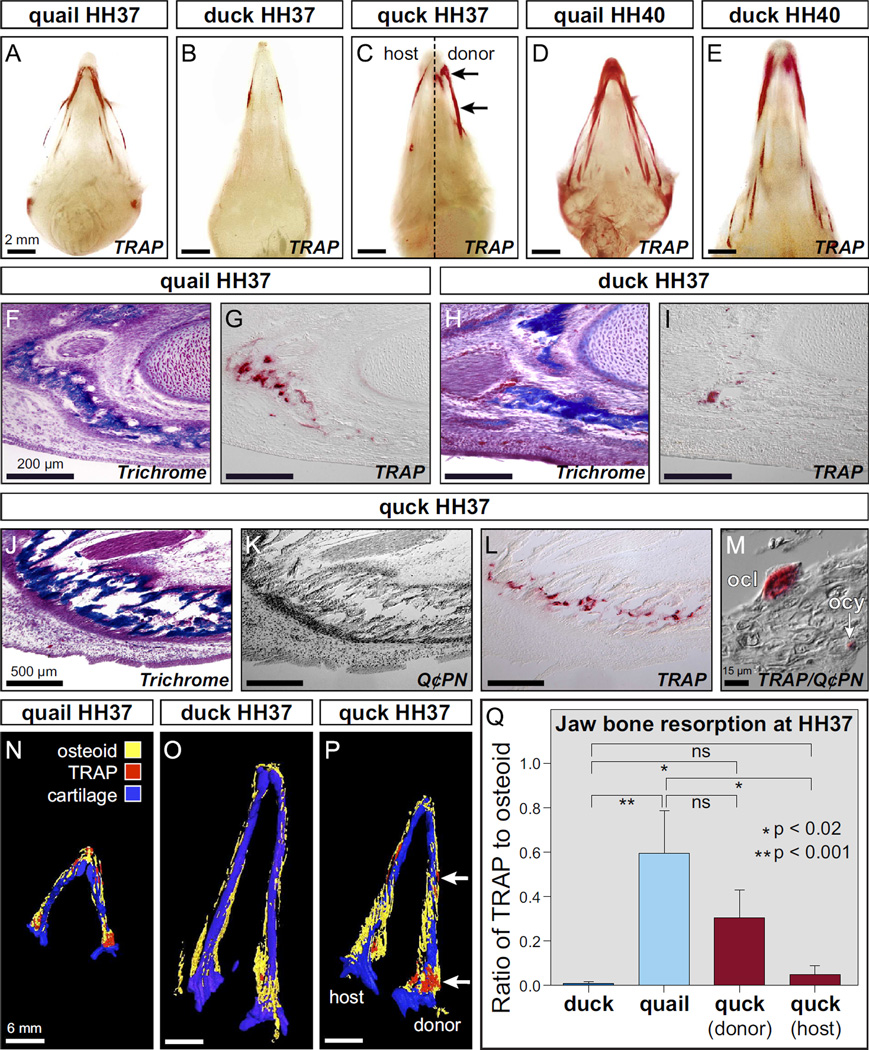Fig. 2.
Species-specific differences in TRAP activity are mediated by NCM. (A) Whole mount TRAP staining in the head skeleton of quail (n=4) versus, (B) duck (n=4) reveals species-specific differences in levels and spatial domains of bone resorption at HH37, especially at the distal and proximal regions of the jaw. (C) Quck demonstrate that NCM controls bone resorption as indicated by higher quail-like levels and spatial patterns of TRAP activity on the donor side (arrows) of duck hosts (n=8). (D) By HH40, TRAP staining is more robust and widespread in quail (n=4) versus (E) duck (n=6) demonstrating both species- and stage-specific regulation of bone resorption. (F) Sections through the distal lower jaw skeleton at HH37 demonstrate that in the osteoid matrix of developing bone (stained blue), quail (n=6) have (G) high levels of TRAP-positive cells (stained red). (H) In equivalent bony regions of the duck jaw (I) less TRAP-positive staining can be observed (n=6). (J) Sections through the lower jaw of chimeric quck reveal that (K) coincident with the presence of quail-derived bones (Q¢PN-positive donor cells stained black) (L) there are quail-like levels of TRAP-positive staining (n=6). (M) Based on their small size and location within the bone matrix, osteocytes (ocy) can be recognized as being both TRAP-positive and Q¢PN-positive (arrow). Based on their large and irregular morphology, osteoclasts (ocl) can be identified as TRAP-positive but Q¢PN-negative. (N) 3D reconstruction of a quail mandible at HH37 showing the distribution of osteoid matrix (yellow) and TRAP staining (red) down the length of Meckel’s cartilage (blue). (O) Substantially lower levels of TRAP staining can be seen in the duck mandible. (P) The donor side of the chimeric quck mandible has higher levels of TRAP (arrows) like that observed in quail whereas the host side has lower duck-like levels. (Q) Quantification of the ratio of TRAP to osteoid volume in duck (n=4), quail (n=4), and quck (n=2) demonstrates that there are statistically significant differences between duck and quail in the amount of bone resorption, and that the donor side of quck is more quail-like whereas the host side is more duck-like.

